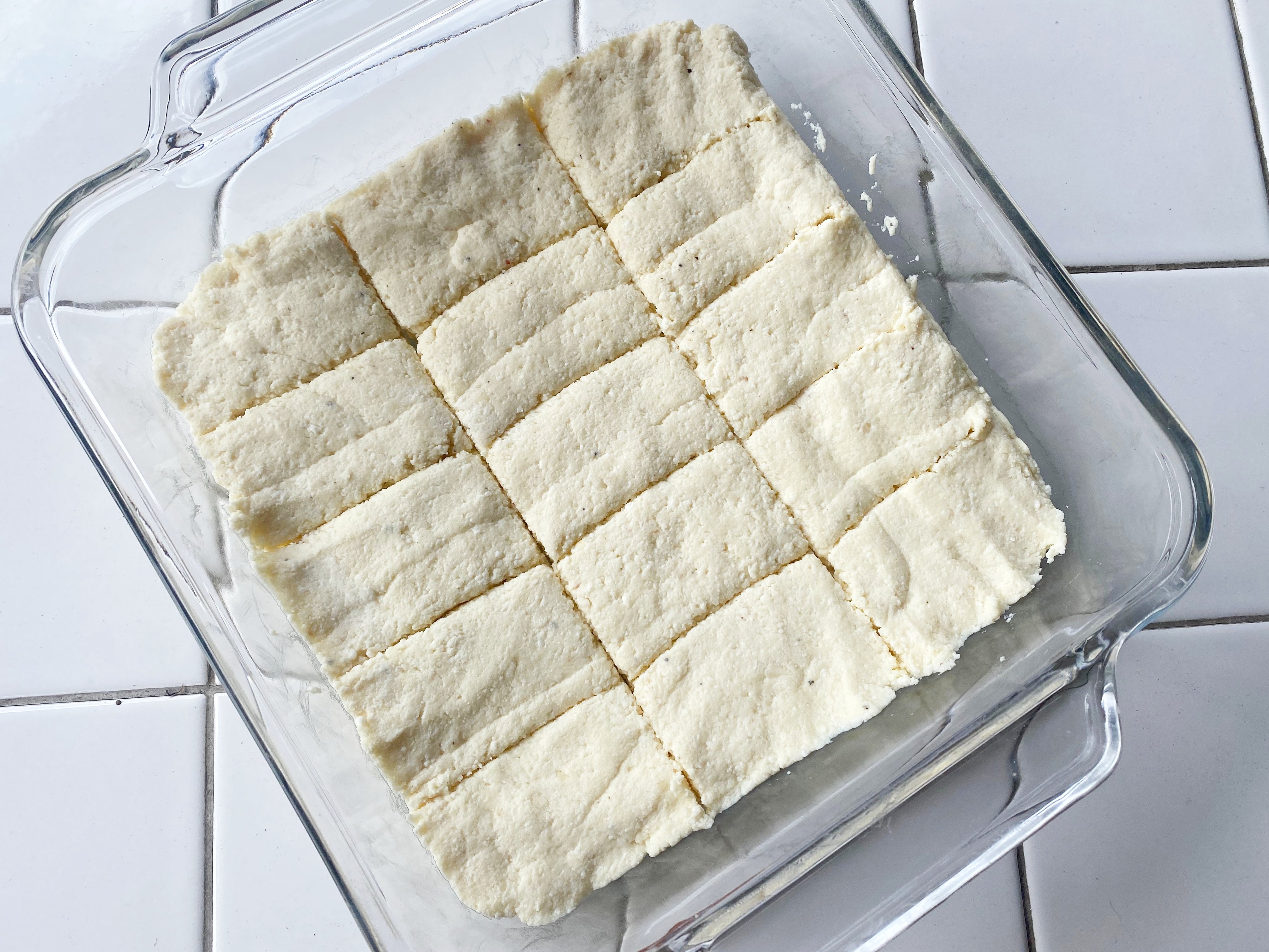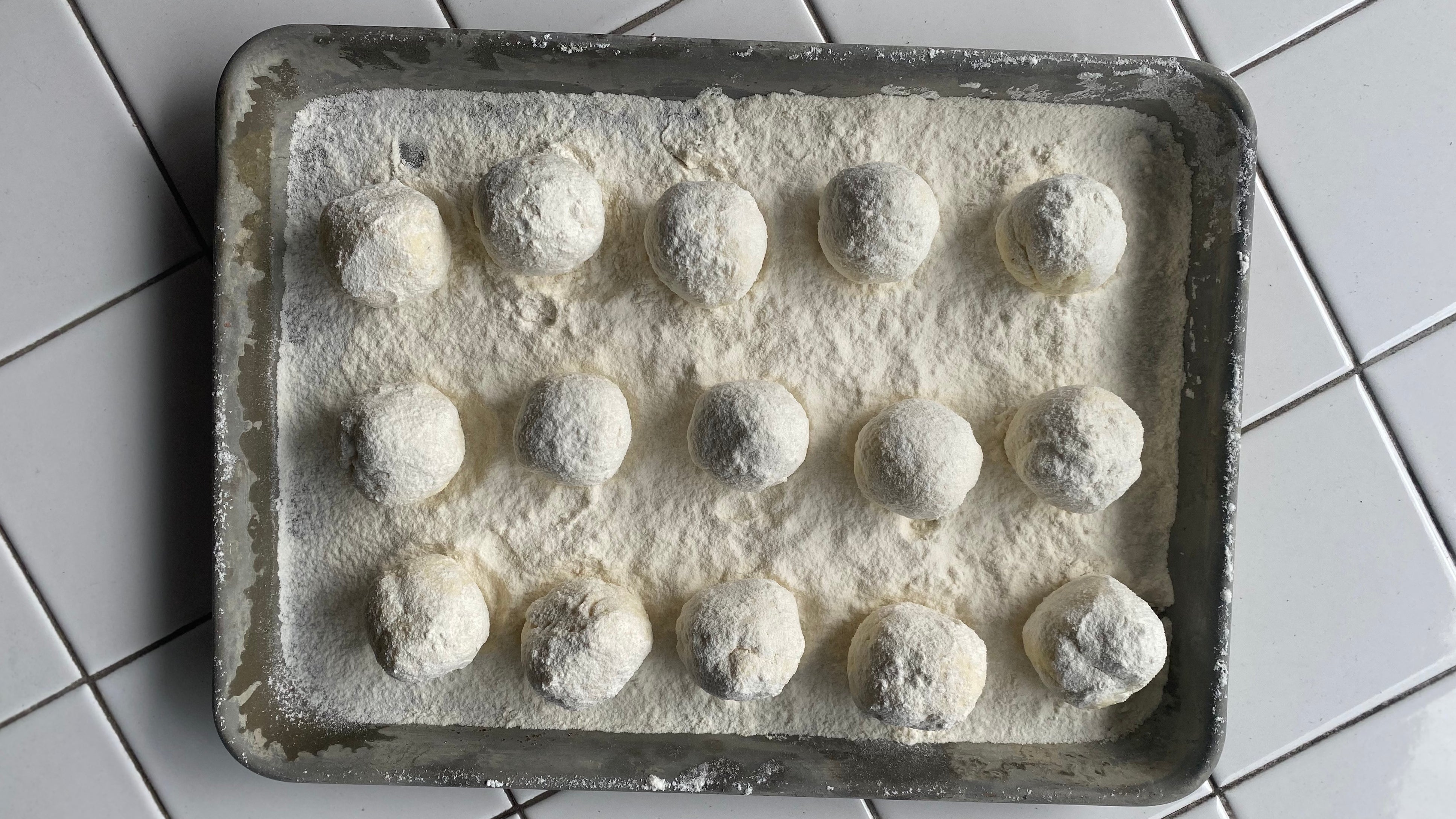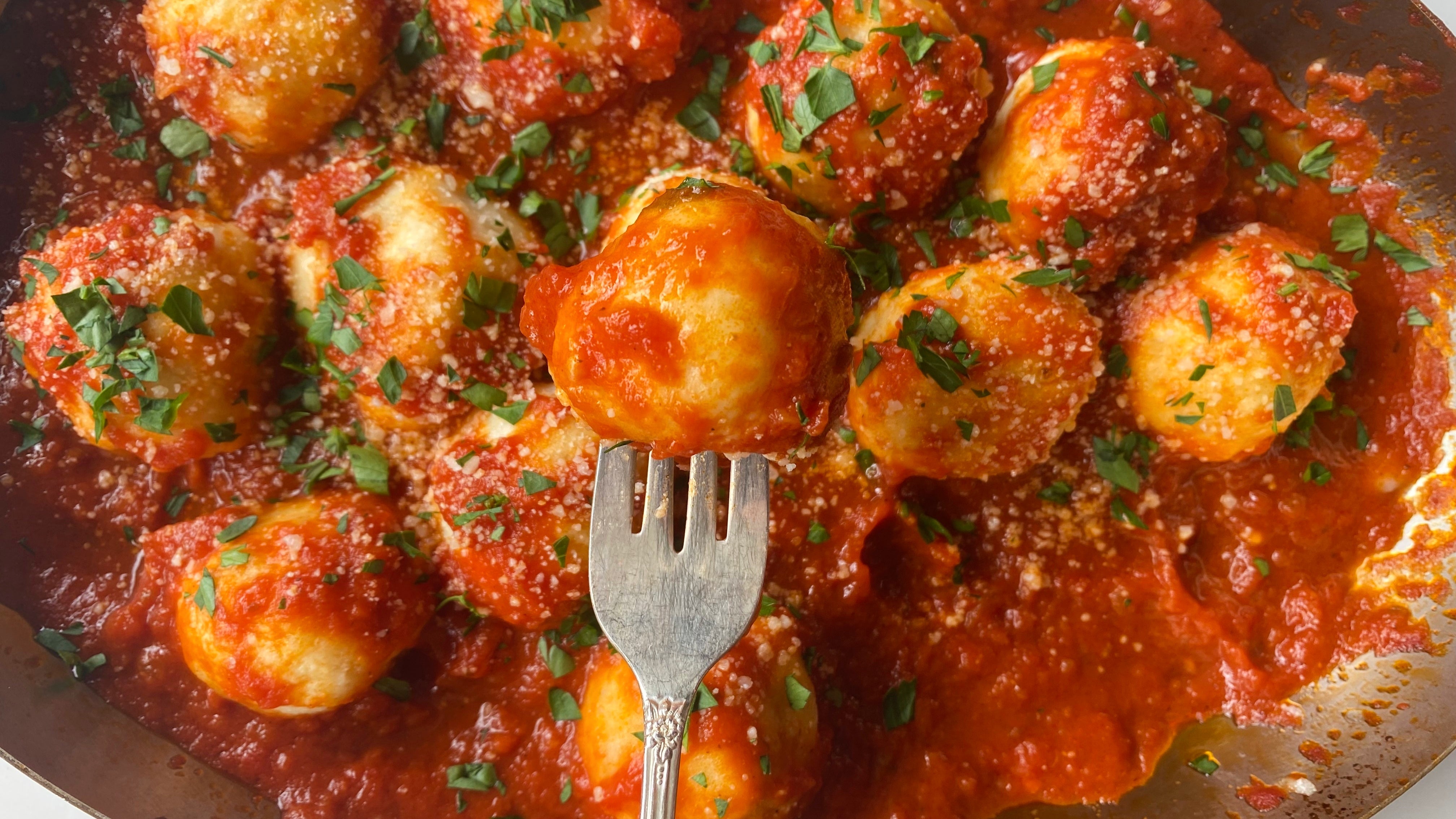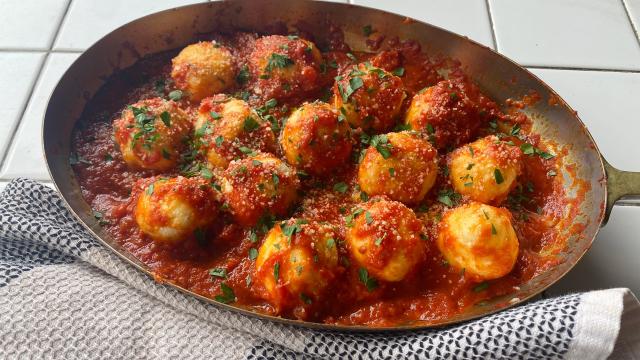There’s a type of food writer who will insist certain recipes can’t be done without the best, most premium ingredients. I once read an article that said you shouldn’t even bother making a caprese without the finest bufula mozzarella (or, if you must, local cow’s milk mozzarella). This, in my not-so-humble but somewhat cheap opinion, is silly. If eating a caprese with grocery store cheese makes you happy, then eating a caprese with grocery store cheese is perfectly fine.
Similarly, I’ve seen several gnudi recipes that insist you can’t make the little cheese dumplings without the finest ricotta. This is a lie. You can, and they taste great.
The difference between gnudi and gnocchi
If you’ve never had gnudi before, you’re in for a treat. “Gnudi” is Tuscan for “nude,” as the little balls are essentially the naked filling you’d find in ricotta ravioli, bound with flour and egg and rolled into dumplings before being briefly boiled. They’re fluffier and lighter than their potato-based cousin, gnocchi, with lots of cheesy, savoury flavour that pairs best with a traditional sauce of browned butter and sage, or a simple marinara.
It’s a straightforward recipe, but people get kind of weird about it. There’s a lot of hand wringing around the gnudi keeping their shape, with many recipe writers insisting that only the thickest, creamiest ricotta will prevent the tender morsels from falling apart and tasting bad. Cheap grocery store ricotta will not do, they say, and some try to reinforce the structural integrity of dumpling by creating a thin shell of semolina around it (which takes nearly three days).
I’m not saying those recipes are bad. If you want to pay extra for premium ricotta, you’re welcome to. The dumpling is mostly cheese, after all, and even “bad” cheese is pretty good. My point is you can make gnudi with whichever ricotta you have access to, and you shouldn’t feel badly about it.
How to keep cheap gnudi from falling apart
I don’t have a go-to gnudi recipe, so I used the proportions suggested in this simple one from TheKitchn. Like most gnudi recipes, this one stresses the importance of using ultra-creamy, high-quality ricotta. But you don’t need expensive cheese to be a gnudi cutie; you just need a freezer and paper towels.
The paper towel idea came from Serious Eats, and it is a good one, even if their recipe takes nearly three days. (I’m sure it’s a great recipe, but I simply do not have the patience or fridge space to wait three days for dumplings.) I lined a plate with three paper towels, spread the cheese on top of them, then placed three more paper towels on top and pressed down hard. I removed the top layer and repeated the manoeuvre with a fresh paper towel, then removed that one, got a fresh one, and did it one more time. I weighed the cheese before and after, and found that it lost about 20% of its moisture, which is good — a drier cheese will bind better with eggs and flour, which will help keep things together in a the pot.
Freezing is the other key to stable dumplings. If you’ve ever deep fried things that are prone to melting — like candy bars or ice cream — you know that freezing can help delicate confections keep their shape while they’re cooked in hot oil. The same principle applies here. By going from very cold to very hot, you skip the middle “kinda warm” stage, which is where things start to fall apart. I froze my gnudi dough twice — once before shaping into balls, and again after shaping, but before boiling.

The other thing I did was simplify the portioning using this meatball trick I read about on Reddit. Instead of scooping the dough with melon baller or similar implement (which I’m always losing), I pressed the dough into an even layer in a baking dish, then divided it into 15 equal portions using my dough scraper. Once portioned, I popped the dish in the freezer for 10 minutes until the dough was firm but still scoopable.

Each rectangle of dough lifted cleanly out of the baking dish, and I was able to roll them into spheres without any structural issues. I then dusted a baking sheet with a thick layer of all-purpose flour, set the gnudi on that flour, and covered them with even more flour. The flour helps the dumpling keep its shape by forming a little doughy shell around the cheese dough as it cooks; it’s not quite pasta, but it’s pasta-adjacent. Once the balls were dusted, I put the baking sheet in the freezer for 15 minutes, then got my water boiling and heated up a jar of Rao’s.
How to cook gnudi

If you can cook pre-packaged gnocchi, you can cook homemade gnudi. All you have to do is place them in gently boiling water and let them hang out for 3-5 minutes, until they’re warmed through and float to the top. Then, using a slotted spoon, you can transfer them to a dish of warmed marinara, or the traditional browned butter and sage, or directly into individual bowls, and spoon sauce on top. Just like your choice of cheese, however you choose to plate your gnudi is fine.
Cheap & Easy Ricotta Gnudi (adapted from The Kitchn, serves 2)
Ingredients:
- 450 g ricotta, any brand you desire
- 28 g grated parmesan (I used the pre-grated, kinda powder Murray’s stuff that comes in a tub.)
- 1 egg
- 3/4 teaspoon fine salt
- 1/4 teaspoon freshly ground pepper
- 1/2 cup all-purpose flour, plus more for dusting
- Sauce of choice
Place three paper towels on a plate and spread the ricotta out on top of the towels. Place three paper towels on top and press down to remove excess moisture. Replace wet paper towels with a fresh paper towel and press again. Repeat once more.
Transfer the cheese to a large mixing bowl and add all remaining ingredients, except for the flour. Stir with a rubber or silicone spatula to combine, then add 1/2 cup of flour and mix well to from a dough. Press the dough into a square baking dish, and divide into 15 equal portions with a bench scraper or knife. Set the dish in the freezer for 10 minutes.
Dust a rimmed baking sheet with 1/4 cup of flour. (I used a rimmed quarter sheet.) Scoop and roll each portion of the dough into balls and place them on the floured sheet, then dust the entire surface of each dumpling with more flour. You may have to gently lift and rotate the dumplings to fully cover them; that’s fine, just be gentle. Once everyone is floured, place the baking sheet in the freezer for 15 minutes.
While the gnudi are chilling, bring a pot of salted water to a hard boil, then reduce to a gentle boil. You want bubbles, but you don’t want your water to be on the verge of boiling over. This is also a good time to brown some butter or heat your sauce in a large sauce pan.
Cook the chilled gnudi in gently boiling water, working in batches if needed so they have plenty of room between them. Do that for 3-5 minutes, until they float to the top and are warmed through. Transfer each batch to the warmed sauce using a slotted spoon, until all are cooked and sauced. Serve immediately with more parm, and parsley or basil for garnishing.

Leave a Reply
You must be logged in to post a comment.